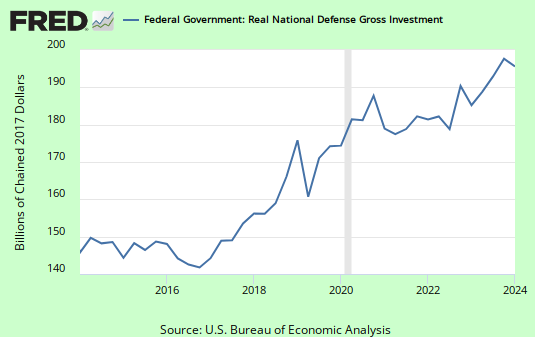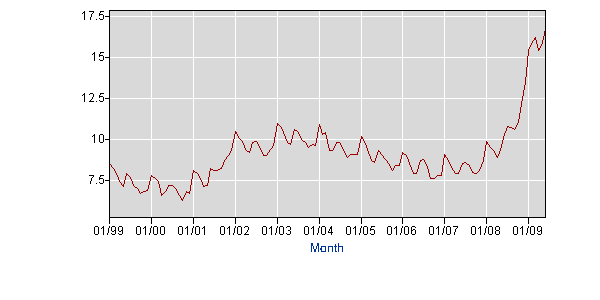Most news organizations report the more popular U.S. Department of Labor: Civilian Unemployment Rate. If you read the report today you learned that unemployment is 10.2 percent for September.
If you read Table 12 in the Bureau of Labor Statistics report you learned the real unemployment rate is 17.5 percent, not 10.2 percent.You would also have noticed the real rate of unemployment is 17.5 percent versus 11.1 percent in September 2008.
Real Unemployment U-6 -- 17.5%
There are other groups of unemployed that are not counted in the more popular employment report. The Bureau of Labor Statistics U-6 report includes the unemployed, and those that have thrown in the towel.
The U-6 report includes:
- Total unemployed
- plus all marginally attached workers
- plus total employed part time for economic reasons
- marginally attached workers are persons who currently are neither working nor looking for work, but indicate that they want and are available for a job, and have looked for work sometime in the recent past.
- Discouraged workers, a subset of the marginally attached, have given a job-market related reason for not looking currently for a job.
Here are some other statistics that you might find disconcerting.
- About 2.4 million persons were marginally attached to the labor force in October,
reflecting an increase of 736,000 from a year earlier. (The data are not sea-
sonally adjusted.) These individuals were not in the labor force, wanted and
were available for work, and had looked for a job sometime in the prior 12 months.
They were not counted as unemployed because they had not searched for work in
the 4 weeks preceding the survey. - Among the marginally attached, there were 808,000 discouraged workers in October,
up from 484,000 a year earlier. (The data are not seasonally adjusted.) Dis-
couraged workers are persons not currently looking for work because they believe
no jobs are available for them. The other 1.6 million persons marginally attached
to the labor force in October had not searched for work in the 4 weeks preceding
the survey for reasons such as school attendance or family responsibilities.
- The average workweek for production and nonsupervisory workers on private nonfarm
payrolls was unchanged at 33.0 hours in October. The manufacturing workweek rose
by 0.1 hour to 40.0 hours, and factory overtime increased by 0.2 hour over the
month. - The number of long-term unemployed (those jobless for 27 weeks and over) was
little changed over the month at 5.6 million. In October, 35.6 percent of
unemployed persons were jobless for 27 weeks or more. - The civilian labor force participation rate was little changed over the month
at 65.1 percent. The employment-population ratio continued to decline in
October, falling to 58.5 percent.
All of the statistics in this article were sourced from the Department of Labor--Bureau of Labor Statistics.
Subscribe to All American Investor via Email
Original content by Bob DeMarco, All American Investor










